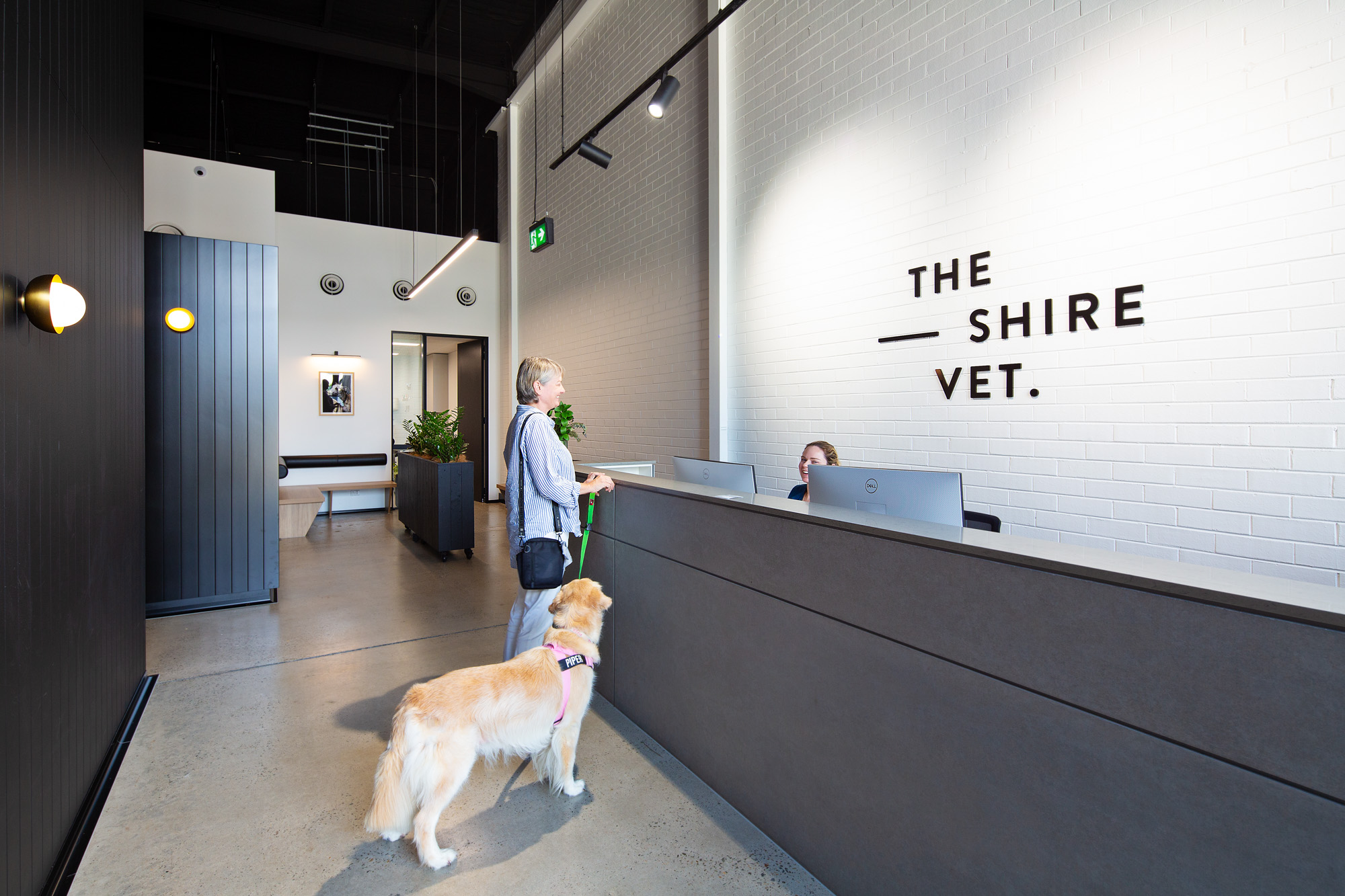Veterinary practice design goes beyond aesthetics. By creating a ‘well-place’ environment, the space will support the physical, mental and social well-being of everyone who interacts with the practice. Whether it is clients in the waiting area, veterinarians assisting animals, or reception staff managing appointments, every element of a veterinary practice’s design should enhance the experience.
So how can you design a well-place that promotes a healthy, welcoming and efficient environment?
Designing for physical and mental well-being
A veterinary practice should provide a safe, clean and calming atmosphere to reduce client and pet anxiety and promote overall wellness.
Physical health
Physical health is a critical consideration in veterinary practice design. Here are a few key elements:
- Clean air and ventilation: Veterinary practices require excellent air quality to ensure that both pets and staff remain comfortable and safe. High-quality HVAC systems are essential to provide proper ventilation and filtration. Add natural elements like plants that enhance air quality and contribute to a calming environment.
- Access to clean water: Hydration is vital for overall health. In veterinary practices, this means ensuring that water fountains or filtration systems are accessible to both clients and staff.
- Movement: While veterinary practices might not have physical space to provide a dedicated room for exercise, creating areas where staff can stretch or take short walks during their breaks will help with physical well-being. Designing areas with appropriate seating arrangements and efficient movement between rooms helps staff remain energised and productive.
Mental health
Mental health is just as important as the physical in the design of veterinary practices. Focus on creating environments that reduce anxiety associated with veterinary visits. If clients feel relaxed because their pets are relaxed, they are likely to tell their friends and relatives about your practice. Word of mouth recommendations are free advertising and lead to new clients! Here are a few strategies:
- Reducing stressors: Create environments that foster calm. Pheromone diffusers are useful aids to relax animals. Pets are highly sensitive to sound. Acoustic panels and sound masking will help to reduce noise in the practice. For their human owners, soft lighting, soothing colours and natural materials will create a relaxing atmosphere. The arrangement of furniture, artwork and other design elements helps reduce the clinical feel of a space and promotes a sense of calm.
- Fostering a sense of community: A veterinary practice is not just a veterinary facility—it’s a place where relationships are built. Design spaces where clients and staff can feel like they belong. Open, welcoming waiting areas, private consulting rooms and team spaces all contribute to creating a sense of connection and community. Staff who feel part of a community will be loyal to your practice and motivated to perform to their best.
- Incorporating biophilic design: Biophilic design—bringing nature indoors—is proven to have mental health benefits. Indoor plants, natural wood finishes and large windows that allow natural light are examples of biophilic elements that help lower stress, improve mood and enhance cognitive function. Animals are also believed to prefer natural light over artificial light so that’s a win for everybody.
Safety and hygiene
Veterinary fit-outs should include:
- Hand hygiene stations: Throughout the veterinary practice, strategically place hand hygiene stations to encourage regular hand washing.
- Sterilisation areas: If your practice conducts veterinary procedures requiring sterilisation, ensure that sterilisation rooms are separate from treatment areas and designed according to industry standards. Evoke Projects follows protocols such as AS5369:2003 when designing veterinary spaces for sterilisation to minimise infection risks.
- Durable and hygienic materials: Choose durable, non-porous materials for countertops, plus floors and walls that are resistant to bacteria and surfaces that are easy to disinfect.
Designing well-places for veterinary practices
At Evoke Projects, we are passionate about designing spaces that promote the health and well-being of everyone who uses them. By adhering to our core philosophy of creating well-places, our practice designs promote Fear Free veterinary care.
Find out more by calling the Evoke Projects veterinary design team on 1300 720 692.
